Art World
In Salt Lake City, a New Museum Director Is Attempting to Bridge the Gulf Between Contemporary Art and Mormonism
Laura Hurtado, a Mormon from California, took the reigns as director of the Utah Museum of Contemporary Art earlier this year.
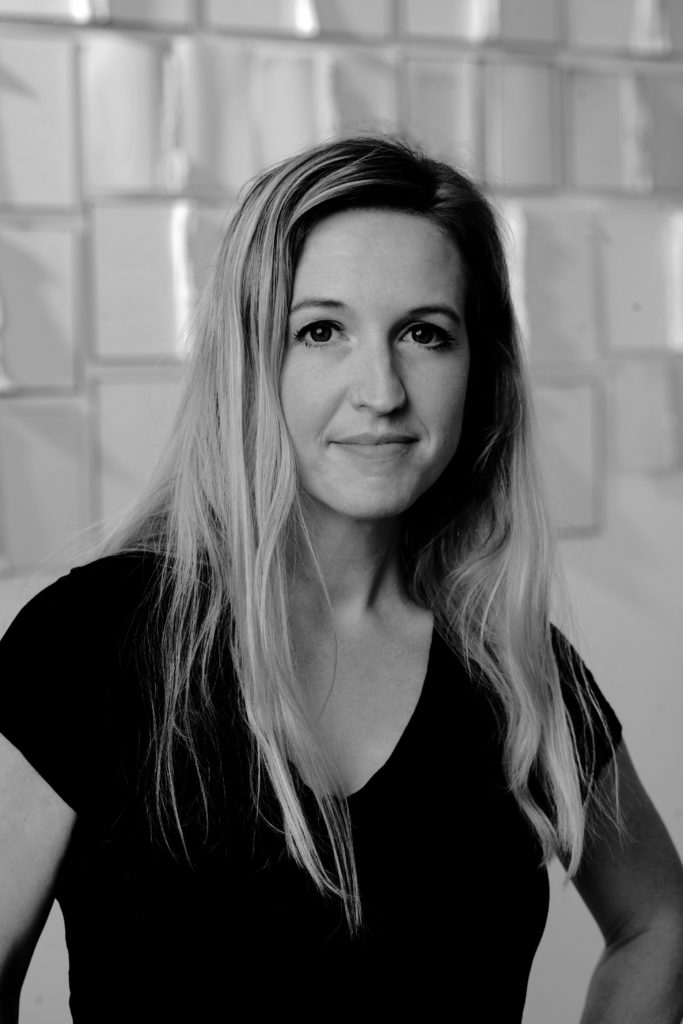
Laura Hurtado, a Mormon from California, took the reigns as director of the Utah Museum of Contemporary Art earlier this year.

Menachem Wecker

It’s a tale of two cultural institutions, separated by just one-fifth of a mile along Salt Lake City’s West Temple Street.
On one side is the Church History Museum, part of the Church of Jesus Christ of Latter-Day Saints, where the collection includes a first-edition Book of Mormon and a Joseph Smith death mask. A didactic informs visitors that art illuminates its collectors’ values and preferences, and it may “pay devotion to God.”
A five-minute walk south is the Utah Museum of Contemporary Art, which welcomes “all points of view, experiences, and ages,” according to its website. It was there, in 2017, that a contemporary Saudi art exhibition, funded in part by a Saudi oil company, compared and contrasted pilgrimage sites Salt Lake City and Mecca. And an exhibition earlier this year addressed the marginalization of LGBT youth, while a 2016 interview on the museum’s website with artist Leeza Meksin, who had works in a sculpture exhibition there, said that Mormon leaders “don’t even know how queer they are.” She added that if the church were more self-aware in this regard it wouldn’t punish sexual minorities and make them choose between their families and their lovers.
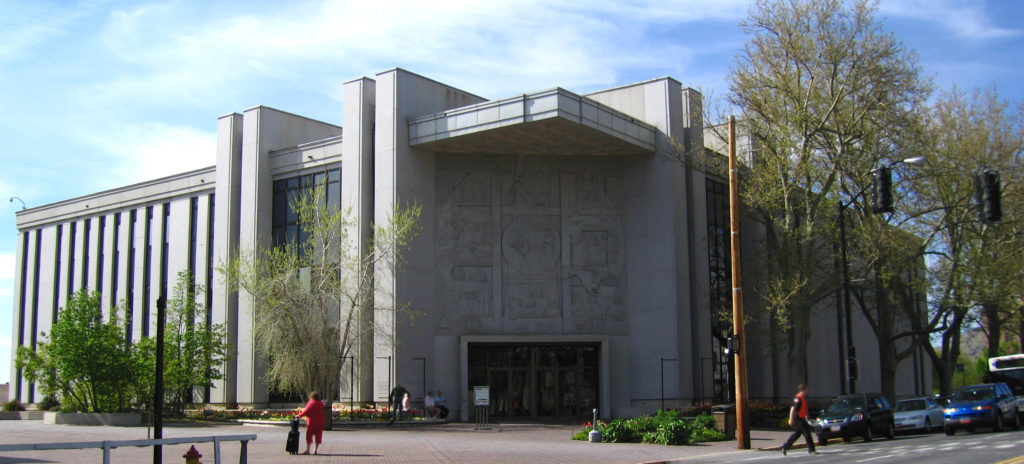
The Church History Museum in Salt Lake City, Utah. Courtesy of the Church History Museum.
The gulf between the two institutions makes it all the more surprising that the Utah Museum’s new executive director, Laura Allred Hurtado, came from the Church History Museum, where she was global acquisitions curator. At the Utah Museum—founded in 1931 as the Art Barn Association before becoming the Salt Lake Art Center in 1958 and the Utah Museum of Contemporary Art in 2011—Hurtado oversees an $800,000 annual budget, six employees, and two contractors.
Hurtado’s path from church museum to secular contemporary arts institution may sound like mixing oils and watercolor, but there is hope in the community that she can bridge the divide.
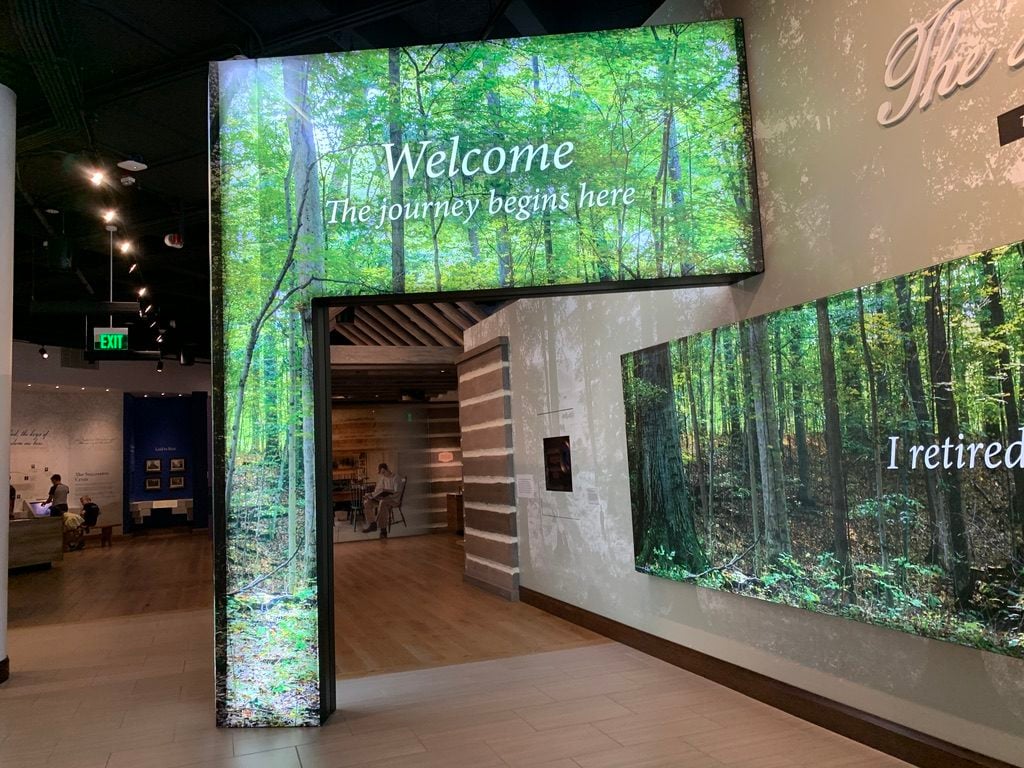
Installation view of the Church History Museum. Photo: Menachem Wecker.
Hurtado grew up in California, and although there is a term ‘California Mormon’—perhaps a distant cousin of a ‘Rockefeller Republican’—she was raised in a devout family with a bishop-father. She attended Brigham Young University as an undergraduate and received her Master’s in art history from the University of Utah, where she wrote a thesis on motherhood and representation in feminist art. (She returned to that subject in her 2014 Church History Museum show “Practicing Charity: Everyday Daughters of God.”)
Early in her tenure at the Church History Museum, Hurtado realized that the institution largely told a traditional story through its art collection and could benefit from showing postmodern and conceptual art as well. “If we were going to create a record of a people, that record needed to be a whole one,” she says.
She is particularly proud of several accomplishments at the museum: a Joseph Paul Vorst retrospective (and acquisitions from the estate), acquiring the Glen and Marcia Nelson Collection of Mormon Art, as well as works by Angolan artist Hildebrando de Melo, and creating culture “capsules” with snapshots of lived religious experiences (modeled on the Warhol Museum’s time capsules).
Utah is home to a small, collegial art world, according to Hurtado, and her work at the Church History Museum distinguished her enough that the Utah Museum of Contemporary Art invited to help curate two shows, the Utah Biennial and “Church vs. State: Contemporary Collecting Praxis.” Hurtado, then still working in her previous job, signed up thinking the latter’s title was “Church and State.” Ultimately, she and the other curator, Felicia Baca, then of the Utah Division of Arts and Museums, decided the title wasn’t a deal-breaker.
Hurtado credits her experience at the Church History Museum with giving her an ability to bridge communities. “Previous curators most certainly would not have been asked, in part because there can be divisiveness within Salt Lake,” she says. “But I was able to curate these two shows, and both were from the lens of the church.”
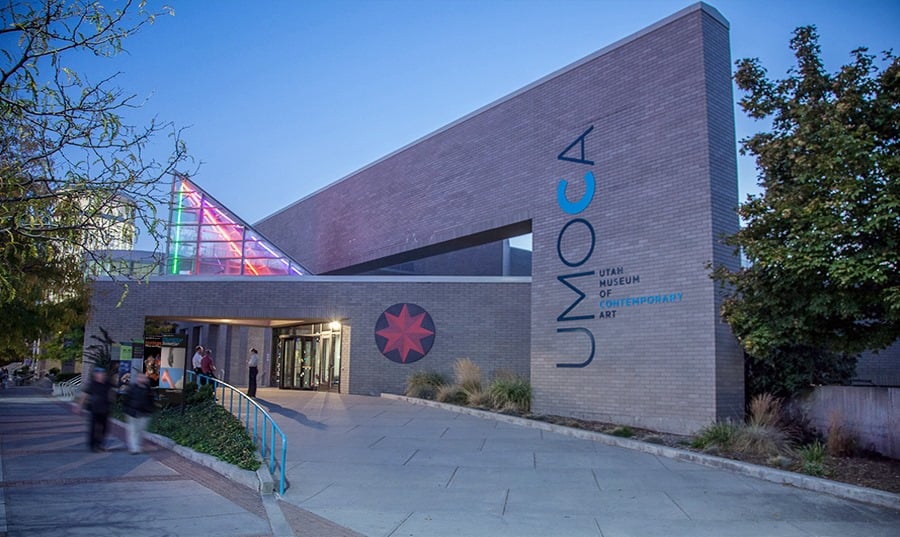
The Utah Museum of Contemporary Art. Courtesy of UMOCA.
Although the church and art have been indelibly linked throughout history, leaders of religious institutions today may have little grasp of contemporary art. As the modern state secularized it gave rise to private art markets and the church retreated from making major commissions, says David Morgan, an art historian and religious studies professor at Duke University. “Nowadays, the two worlds don’t overlap much,” he says.
But in Utah, the crossover may be more apparent. “Because the church is such a public-facing institution in Salt Lake, the lines between the church and public life are not so well defined as they might be elsewhere,” says Matthew Bowman, chair of the Mormon studies department at Claremont Graduate University. One former Church History Library collection and acquisition manager went on to direct the Utah state history office, Bowman notes, and the Mormon church founded Brigham Young University, which it continues to operate today.
Hurtado is somewhat reluctant to describe what was or wasn’t allowed in her former job. Instead, she says, “There were more ideological or philosophical stereotypes, traditions, and biases than institutional edicts,” she says. “I worked to negotiate and navigate these to expand the scope of the collection and the working definition of Mormon art.”
Hurtado considers the Church History Museum a genre institution in the tradition of “disaster museums” like the 9/11 Memorial and Museum or the US Holocaust Memorial Museum. “There’s not going to be irony or criticism within that space,” she says. “Whereas other institutions may have a critique or a nuanced perspective, they’re very exacting to what they’re trying to say and accomplish.”
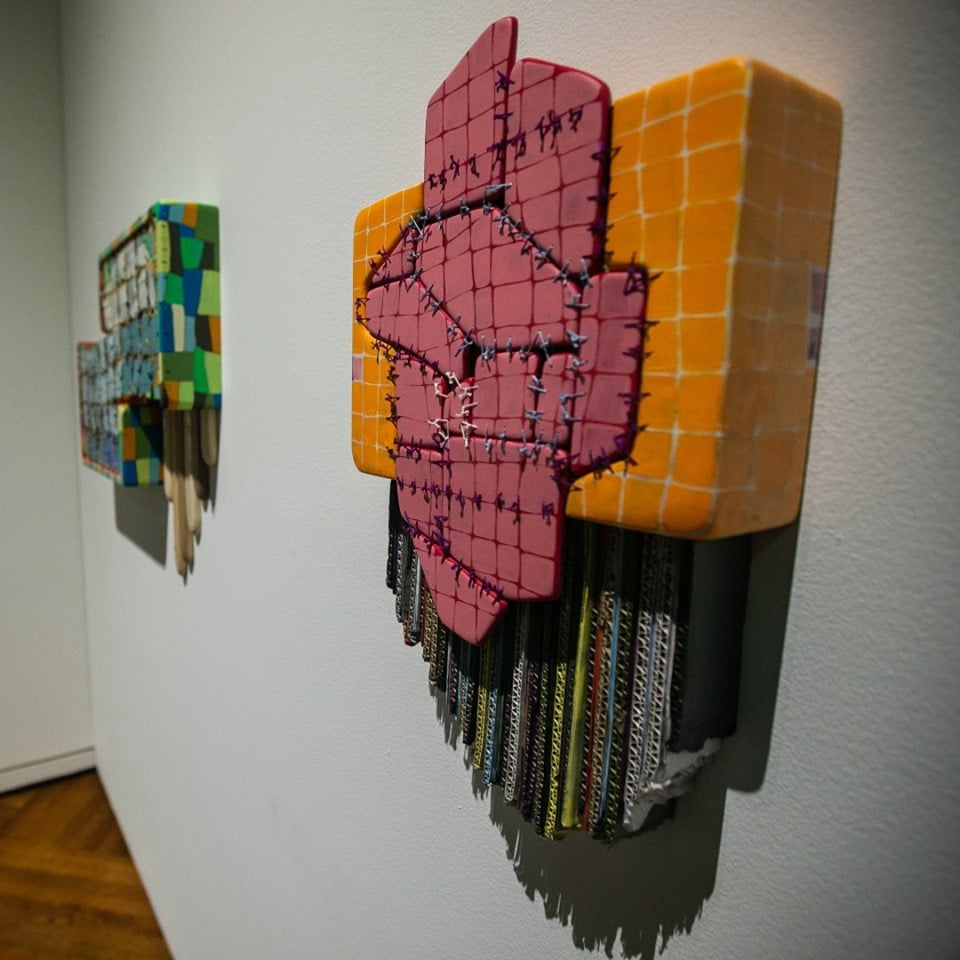
Installation view of Art Morrill’s works in the main gallery. Courtesy of the Utah Museum of Contemporary Art.
Religious aspects of Hurtado’s curating haven’t diluted her shows, says Mark Magleby, who directs the Brigham Young University Museum of Art and was Hurtado’s undergraduate adviser. She “very deftly” acquired works for the Church History Museum that were interesting conceptually while still not being critical of faith, he says. “She’s been very brave in what she’s done in various periods of her life,” he says.
The Church History Museum’s comparatively “vanilla” lens wasn’t a bad thing to Hurtado, but she feels more freedom working within the broader mandate of the Utah Musuem. She hopes to bridge Salt Lake City’s contemporary art and church communities, but she’s also eager to explore other aesthetic domains beyond the church.
Hurtado compared her old workplace to a cruise ship and her new one to a speedboat. At the Church History Museum, she was forbidden from fundraising, which is now a big part of her job. The Church History Museum “cruise ship” won’t make anyone seasick, but as a giant nautical hotel also won’t rock you. That’s more par for the Utah Museum’s course. “As a speedboat, you feel the waves. You also feel the water in the air, and there’s something that makes you feel really alive in that process,” Hurtado says.
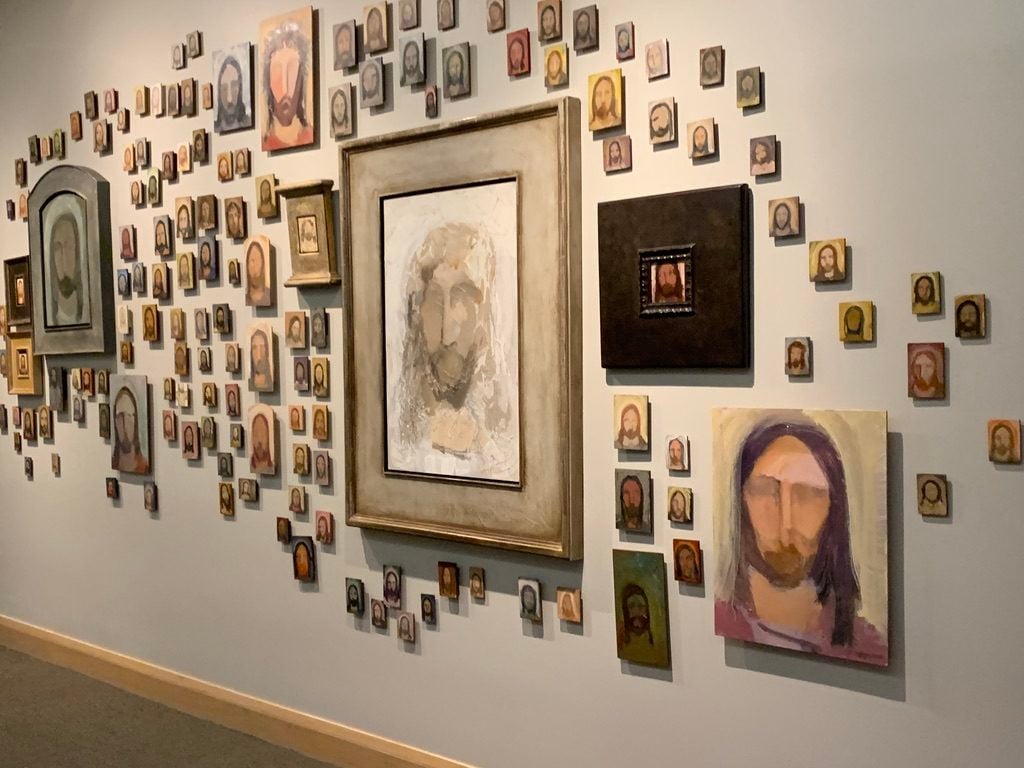
J. Kirk Richards’s “Cristo series” that Hurtado acquired for the Church History Museum. Photo: Menachem Wecker.
Hurtado’s unusual perspective on church art surfaced in a 2016 interview with the Mormon Women Project, a digital interview library. She told the site that she preferred images where Christ turns his back to the viewer with his face obscured because, she said, “It allows such a loaded and iconic figure to be sorted out on a personal level for the viewer.”
At the Church History Museum, Hurtado displayed and acquired J. Kirk Richards’s “Cristo Series” of 150 variously-sized paintings of Jesus, often abstracted. She sent the same series temporarily to the Utah Museum of Contemporary Art for the Utah Biennial. “I like this version of Christ, because it mirrors the terrestrial fog in which we access Christ here on earth,” she told the Mormon Women Project. It’s hard to imagine better training for navigating the contemporary art world in than trekking headfirst through terrestrial fog.